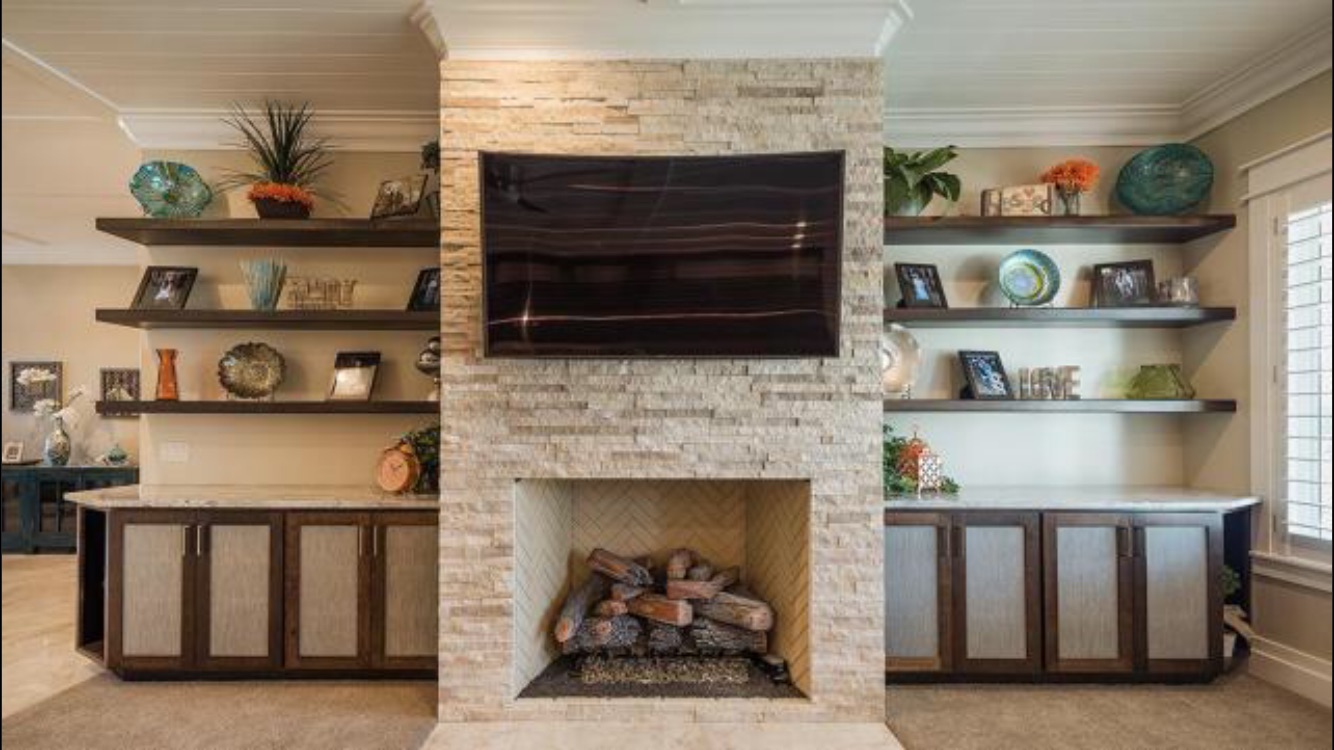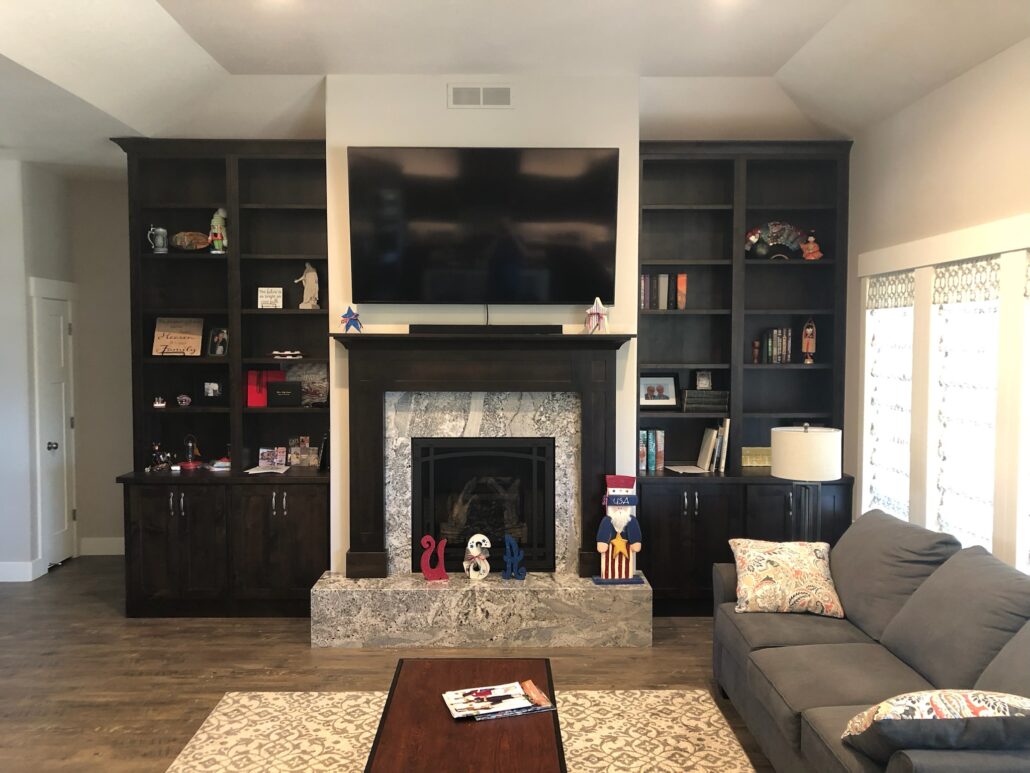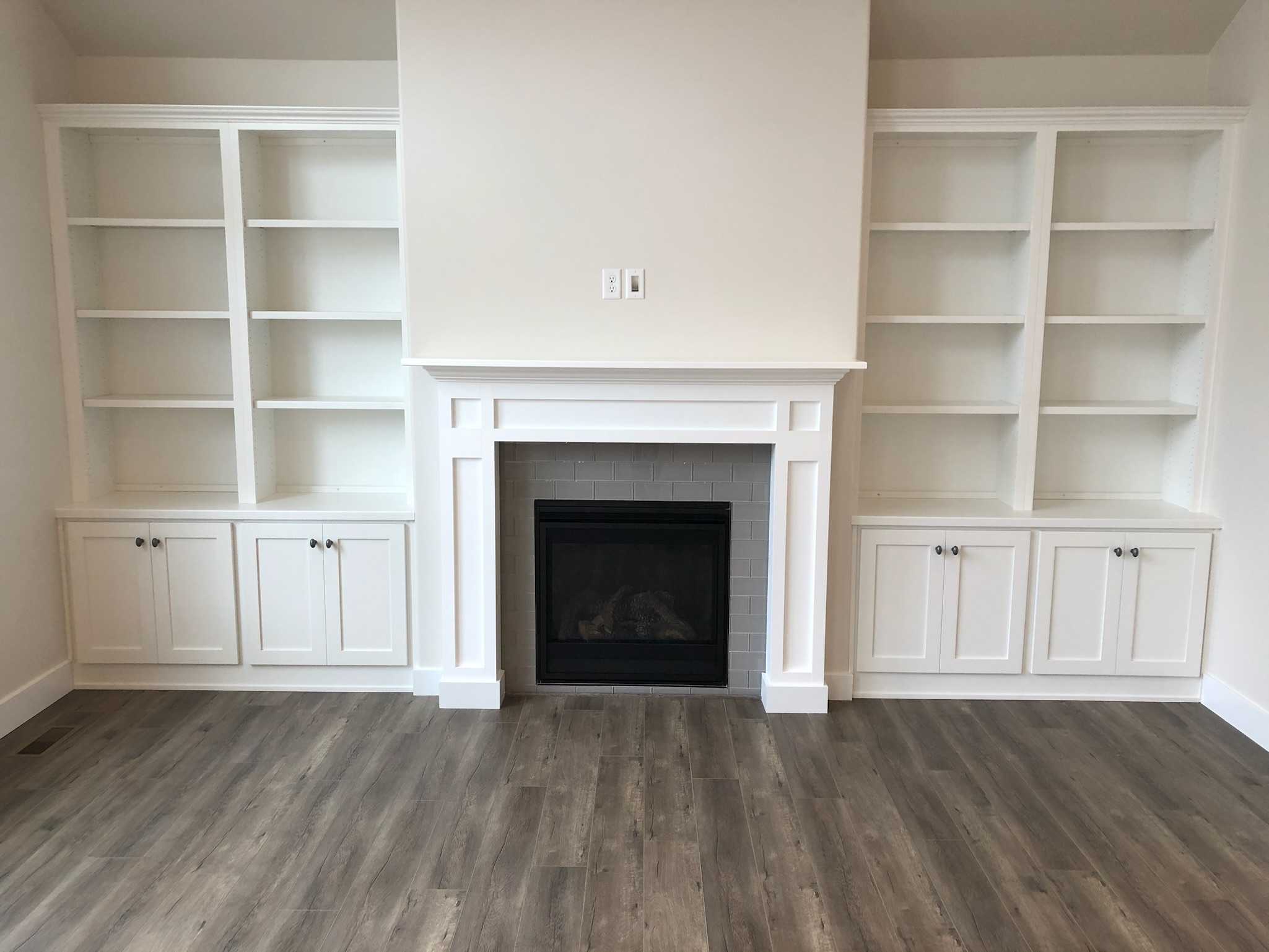
Built Ins and Bookcase Cabinets
Built Ins and Bookcase Cabinet Recent Projects
Your home is the place where, after a long day, you come home and completely relax. That looks just a little bit different for everyone, but with the rise of streaming services, it very often involves the TV. Entertainment centers, especially custom-designed entertainment centers, create a space for your TV and other media that improves your home’s storage capacity and overall appearance.
Entertainment centers provide storage for media devices, cords, cables, remotes, and other means of media, including books, DVDS, and games. When you design yours with Wasatch Custom Cabinets, we ensure that every detail is taken care of, providing you with quality work to match your preferences. With designs to suit your taste—rustic and traditional to modern and sleek—we are sure to create the perfect entertainment center for your home.
The Perfect Design
When designing your perfect entertainment center, it is important to know what you plan to store or display there. Your entertainment center should be of a depth that can accommodate everything you want to store in it, whether that be relatively shallow for small knick knacks or pretty deep for keeping extra blankets. Perhaps most importantly, it must be of the right dimensions to house your TV, speakers, and consoles. Remember that TVs are measured from one corner to its opposite diagonally.
Common shapes for entertainment centers include units shaped like a half moon or a more traditional rectangular design. Our experts can help you design the perfect entertainment center for you, whether you want cabinets and shelving only to support your TV or if you want them to bracket or even wrap around the screen. When it comes to choosing a permanent unit or something you can move to the other side of the room, we’ve got you covered.
Built-Ins
Built-in entertainment centers are much more sturdy than freestanding ones, and they give a room a sense of stability and elegance. With this in mind, you must know precisely where you want your entertainment center to rest before you start the process. That will help you know the size restrictions you need to work within as well as other factors that will affect your TV-viewing experience.
Before we build your entertainment center, you’ll need to know the height you want your TV to sit at. We recommend keeping the screen level with your line of sight when you are seated, and certainly no more than 12 inches below it. Be mindful of furniture or doors that could obstruct your sightline and of backlighting or glare from windows. It is also important to take into account access to power outlets and cable lines.

Freestanding Entertainment Centers
When designing your entertainment center, you also have the choice of a less permanent option. Like built-ins, these may include open shelves or closed doors or a blend of the two. Keep in mind that tall freestanding units run the risk of falling over, so entertainment centers that do not attach to the wall are typically lower to the ground.
Wall Units
Wall units are statement pieces first and functioning furniture second. They are usually larger than other varieties of freestanding entertainment centers, with varied widths and heights as tall as 72 inches. It is safer to install tall furniture on hardwood floors.
TV Stands
TV stands tend to be relatively long and designed to support the TV, which usually puts them on the shorter side. Even with a TV-support focus, these entertainment centers can still provide ample storage space underneath.
Media Chests
Media chests are set apart by their occasional incorporation of doors to conceal the TV, making them a great fit for homeowners who do not always want their TVs other other related accessories on display. They too are equipped with plenty of storage space.


